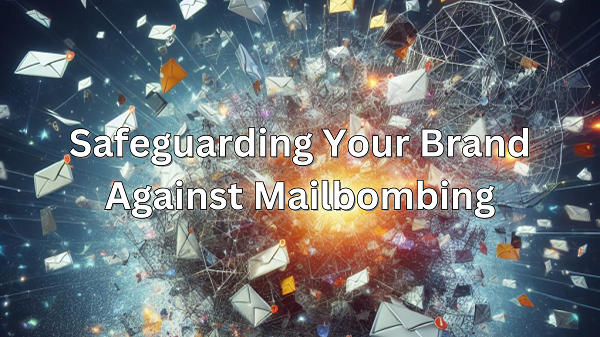In recent discussions within various professional circles, the topic of email security, specifically the challenges posed by mailbombing, has garnered significant attention. Recognizing the nature of this threat and its potential impact on brand integrity, I’ll endeavor to provide insights and actionable strategies for marketing technology and web development teams, and some suggestions on cleaning up the data after such an attack.
Understanding the Perils of Mailbombing
Mailbombing, also referred to as mail flooding or list bombing, transpires when malicious actors exploit your email subscription forms, alongside those of dozens of other brands, to overwhelm a single user with an influx of hundreds of newsletters and other communications. The ramifications include compromised privacy and potential violations of anti-spam legislation, posing a severe threat to both recipients and brands alike. Motivations behind mailbombing range from misguided pranks to revenge-driven attacks and attempts to conceal illicit activities (ex: financial account or a social media account take over), as this notifications are lost in the flood of emails that they receive.
The gravity of mailbombing cannot be overstated. A tarnished sender reputation, exemplified by being listed on platforms such as Spamhaus, can have detrimental effects on your brand’s integrity. Even with confirmed opt-ins, the risk of reputational damage persists for several weeks or months after the incident, for both the brands and the consumer.
Deconstructing Mailbombing: A Technical Perspective
A mailbombing attack utilizes scripts to subscribe a single user to numerous newsletters concurrently. Confirmation messages, subscription notifications, and other transactional messages flood the user’s inbox, rendering it unusable for an extended period. While an individual subscription form may not seem abusive, the cumulative impact across multiple websites is exponential, making it challenging for companies to recognize their inadvertent involvement in the problem.
Preventing Mailbombing: A Strategic Approach
- Opt-in with Email Validation: Incorporate the standard practice of sending confirmation emails for opt-ins. Include a defined message header in these emails to help recipients’ servers recognize and mitigate potential mailbomb attacks.
- Implement Filtering Systems: Develop submission form filters that scrutinize timestamps or generated keys. Reject submissions with unrealistic completion timeframes or missing timestamps, indicative of automated bots.
- Enable CAPTCHA: Utilize CAPTCHA tests to ensure human completion of online forms. Proper configuration is essential to maximize effectiveness.
- Keep Your Website Up to Date: Regularly update your website, including content management systems, plugins, themes, extensions, and server, to maintain the latest security standards.
- Optimize Form Security Features: Implement unconventional field names, enforce rate limits, limit geography if applicable, and use blank fields to differentiate between bots and genuine users. Limit the systems that can inject into your form submission systems.
- Watch your bounces: Many mailbox providers have started including bounces that describe a recipient receiving too many messages in a short period of time. You’re ESP might flag this for your review if they suspect you’re forms are participating in abusive Mailbombing attacks.
- Block portions of the internet: Services like TOR or VPNs are commonly used to commit these types of attacks, blocking TOR networks/nodes can significantly reduce the likelihood attacks on it’s own.
Responding to Mailbomb Attacks: Tactical Countermeasures
If your forms are suspected to be part of a mailbombing attack, follow these steps:
- Identify and remove forged subscribers by analyzing data points and IP addresses.
- Temporarily take the form offline while addressing the code vulnerability.
- Segment and suppress users within the identified timeframe during investigation.
- Relaunch your site with an enhanced and secure version of your form.
While immediate detection of mailbombing attacks may be challenging, proactive implementation of the aforementioned measures will fortify your website forms and enhance overall security. Strengthening these defenses ensures the protection of your subscribers and preserves the integrity of your brand in the face of evolving email threats. More information can be found in the M3AAWG Best practice document Mitigating Abuse of Web Messaging Systems.


